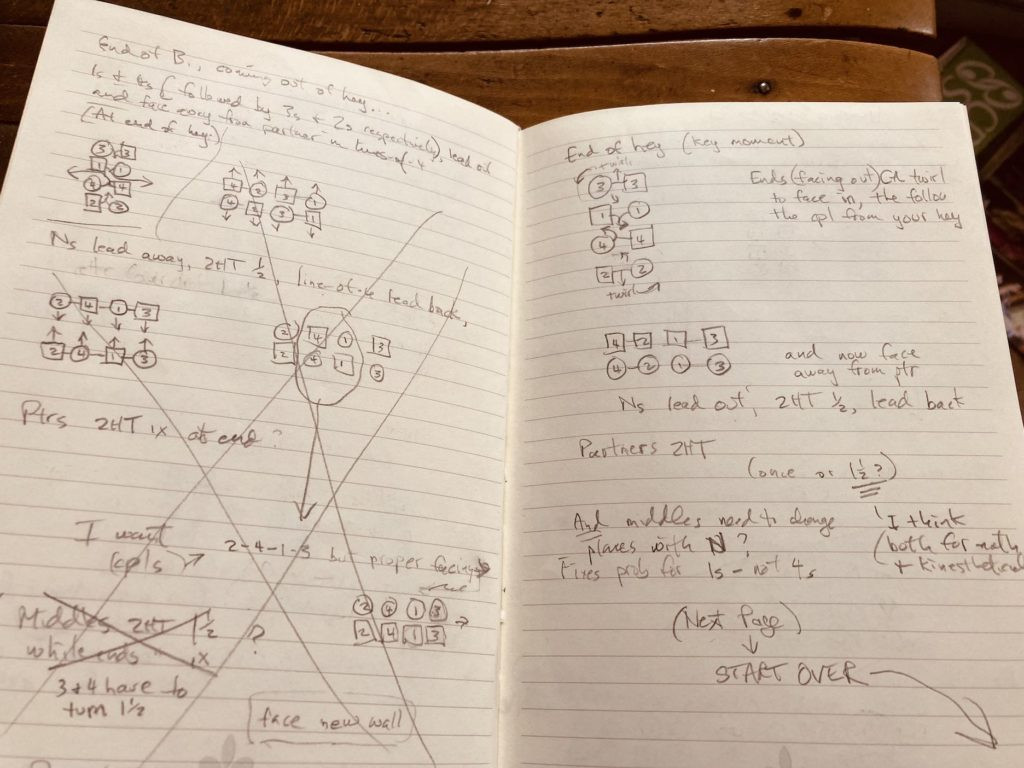Country Dances encompass a rich tapestry of social dance traditions from various cultures. This article delves into a specific categorization and notation system used to describe and classify these dances, particularly within the realms of contra and English country dance. Understanding these classifications can be invaluable for dancers and instructors alike, offering insights into the nature and complexity of different dance forms.
This categorization system distinguishes between “Tried and True” dances, “Untested” dances, and “Beta” dances. Each category reflects a different stage in the evaluation and refinement process of dance choreography.
 Chess pieces representing tried and true country dances
Chess pieces representing tried and true country dances
“Tried and True” country dances are those that have been successfully implemented and enjoyed in real-world dance settings. These dances have proven their appeal and workability with diverse groups of dancers. They are considered reliable and enjoyable options for social dance events.
“Untested” country dances, in contrast, are often newly developed sequences that have not yet been fully evaluated with live dancers. These dances are often creations born from periods of creative exploration, awaiting the crucial test of practical application in a dance setting. The transition from “Untested” to another category depends on feedback and observation from actual dance experiences.
The “Beta” category represents a more nuanced classification of country dances. Dances in this group are placed there for a variety of reasons, often indicating they are still under development or require further observation. Some “Beta” dances may have shown promise in initial testing but necessitate more extensive evaluation to refine teaching methods or clarify figure descriptions. Others might be older choreographies that, while cherished by the creator, possess a style that deviates from mainstream country dance trends, limiting their broader applicability. Furthermore, “Beta” dances can also be experimental pieces that hold intriguing possibilities but are not yet considered fully polished or universally successful. They remain in this category as a potential source of inspiration for further development, either by the original choreographer or others in the dance community.
 Musical notes representing untested and beta country dances
Musical notes representing untested and beta country dances
Understanding Global/Positional Notation in Country Dances
The notation system employed here is global/positional notation, a method that focuses on describing dancer positions and movements within the dance space. This approach aims to provide clear and adaptable instructions, though it is acknowledged that refinement is an ongoing process.
Several conventions are used within this notation system to enhance clarity and precision:
-
Files (R-file, L-file): Drawing from practices in English country dance, the terms “R-file” (right file) and “L-file” (left file) are used to denote the lines in a longways set. When dancers face upwards, those on the left form the left file, and those on the right constitute the right file. Individual dancers within these files are identified as #1R (top dancer in the right file), #1L, #2R, and so forth. While valuable for notation, these terms are primarily for descriptive purposes and less frequently used in live teaching or calling, where orientation cues based on the dance hall environment are preferred.
-
Terminology Borrowing: Terms like “diagonals” or “corners,” commonly used in English country dance terminology, are sometimes adopted when describing contra dances. This is due to the historical exchange of figures and choreographic concepts between English country dance and contra dance, including figures like heys, Mad Robin figures, poussettes, chase figures, and figures of 8. The use of this terminology, while not yet widespread in contra dance, aims to bridge understanding across related dance forms.
-
Positional Focus: The notation prioritizes describing dancer positions at any given moment rather than focusing on their starting roles or identities. Terms like “right file” or “right diagonal” refer to whoever occupies that position at that specific point in the dance sequence. Exceptions occur when it is beneficial to track specific individuals, such as first and second corners in adapted hey figures, where step-by-step role descriptions become necessary.
-
Proper and Improper: Recognizing the increasing inclusivity in dance participation regardless of traditional roles or starting positions, positional language supports this trend. However, in contra dance, the concept of “proper” and “improper” remains relevant concerning swing endings. An “improper” contra dance is defined by couples, in a hands-four circle (ones facing down, twos facing up), standing on their designated “swing-ending” side relative to their partner. Conversely, a “proper” contra dance involves couples in hands-four, all swinging and then facing upwards before the dance commences. This arrangement dictates that if swings end on the right, dancers begin and end the dance in the right file, and vice versa. Interestingly, the currently more common contra dance setup is “improper,” while the historically traditional “proper” form is less frequent, potentially leading to a future terminology shift. In English country dance, “proper” and “improper” have been used similarly by modern choreographers, but their relevance is diminished due to the rarity of swings with specific ending-side conventions. Within the dance instructions, “proper” can also refer to the starting side of the dance, and “improper” to the opposite side, used for orienting dancers during specific moments.
-
Chain (in Contras): Unless specified otherwise in contra dances, “chain” implies a right-hand chain, where the person on the right offers their right hand to their counterpart across the set.
-
Allemande (in Contras): In contras, allemandes are generally executed by the person with the appropriate free hand. Thus, “allemande left” indicates that individuals with their left hand free will perform the turn, and vice versa, unless stated differently.
Explore Dance Instructions:
The following links provide access to pages containing detailed dance instructions. Each dance title is accompanied by asterisks indicating an estimated difficulty level, ranging from easy (*) to challenging (*****). These difficulty assessments are based on various factors and encompass both tested and untested dances, acknowledging that individual experiences of difficulty may vary.
| Contras, etc. | English country dances |
|---|
Master List of All Dances:
| Contras, etc. | English Country Dances |
|---|
